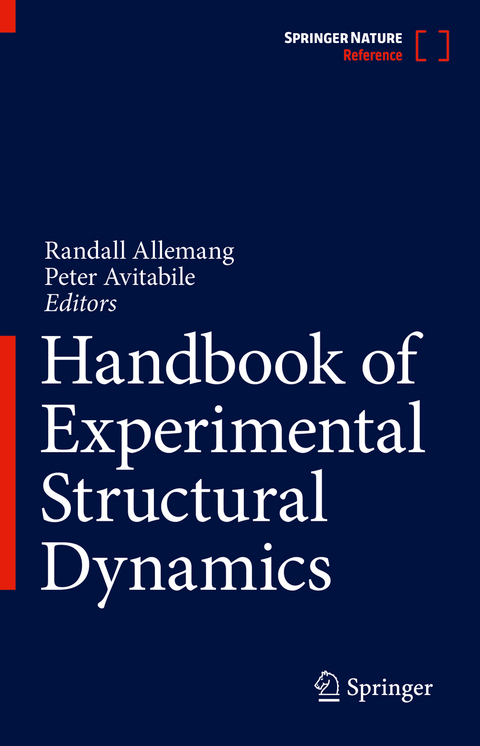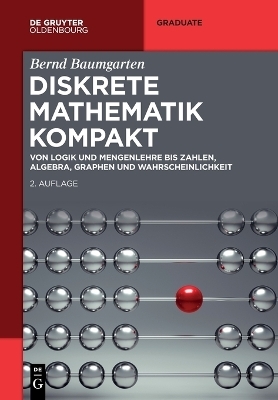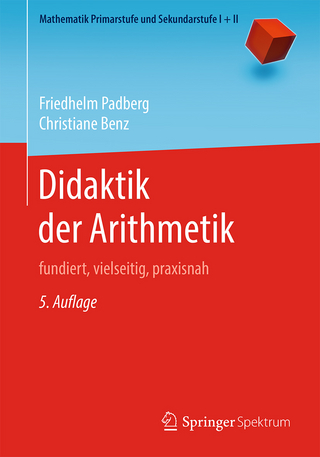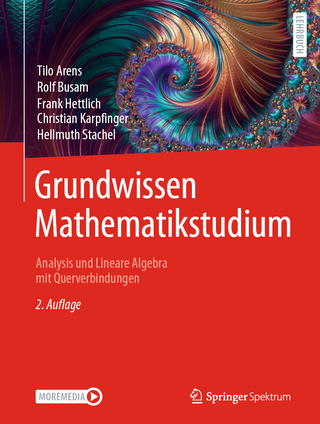
Handbook of Experimental Structural Dynamics
Springer-Verlag New York Inc.
978-1-4614-4546-3 (ISBN)
The SEM Handbook of Experimental Structural Dynamics stands as a comprehensive overview and reference for its subject, applicable to workers in research, product design and manufacture, and practice. The Handbook is devoted primarily to the areas of structural mechanics served by the Society for Experimental Mechanics IMAC community, such as modal analysis, rotating machinery, structural health monitoring, shock and vibration, sensors and instrumentation, aeroelasticity, ground testing, finite element techniques, model updating, sensitivity analysis, verification and validation, experimental dynamics sub-structuring, quantification of margin and uncertainty, and testing of civil infrastructure. Chapters offer comprehensive, detailed coverage of decades of scientific and technologic advance and all demonstrate an experimental perspective. Several sections specifically discuss the various types of experimental testing and common practices utilized in the automotive, aerospace, and civil structures industries.
· History of Experimental Structural Mechanics
· DIC Methods - Dynamic Photogrammetry
· LDV Methods
· Applied Digital Signal Processing
· Introduction to Spectral - Basic Measurements
· Structural Measurements - FRF
· Random and Shock Testing
· Rotating System Analysis Methods
· Sensors Signal Conditioning Instrumentation
· Design of Modal Tests
· Experimental Modal Methods
· Experimental Modal Parameter Evaluation
· Operating Modal Analysis Methods
· Analytical Numerical Substructuring
· Finite Element Model Correlation
· Model Updating
· Damping of Materials and Structures
· Model Calibration and Validation in Structures
· Uncertainty Quantification: UQ, QMU and Statistics
· Nonlinear System Analysis Methods (Experimental)
· Structural Health Monitoring and Damage Detection
· Experimental Substructure Modeling
· Modal Modeling
· Response (Impedance) Modeling
· Nonlinear Normal Mode Analysis Techniques (Analytical)
· Modal Modeling with Nonlinear Connection Elements (Analytical)
· Acoustics of Structural Systems (VibroAcoustics)
· Automotive Structural Testing
· Civil Structural Testing
· Aerospace Perspective for Modeling and Validation
· Sports Equipment Testing
· Applied Math for Experimental Structural Mechanics
Contributions present important theory behind relevant experimental methods as well as application and technology. Topical authors emphasize and dissect proven methods and offer detail beyond a simple review of the literature. Additionally, chapters cover practical needs of scientists and engineers who are new to the field. In most cases, neither the pertinent theory nor, in particular, the practical issues have been presented formally in current academic textbooks. Each chapter in the Handbook represents a ’must read’ for someone new to the subject or for someone returning to the field after an absence. Reference lists in each chapter consist of the seminal papers in the literature.
This Handbook stands in parallel to the SEM Handbook of Experimental Solid Mechanics, where this Handbook focuses on experimental dynamics of structures at a macro-scale often involving multiple components and materials where theSEM Handbook of Experimental Solid Mechanics focuses on experimental mechanics of materials at a nano-scale and/or micro-scale.
Dr. Allemang is a Professor Emeritus and member of the faculty of the Mechanical Engineering Program in Mechanical and Materials Engineering, University of Cincinnati, where he currently also serves as Director of the Structural Dynamics Research Laboratory (UC-SDRL). Dr. Allemang has been actively involved in the area of experimental structural dynamics and modal analysis for over forty years, pioneering the use of multiple input, multiple output estimation of frequency response functions, developing the concept of cyclic averaging, formulating the modal assurance criterion (MAC) and the enhanced frequency response function and reformulating modal parameter estimation algorithms into the unified matrix (coefficient) polynomial approach (UMPA). Dr. Allemang has served on the Advisory Board for the International Modal Analysis Conference (1981-2015, Chairman, 1986- 1995), on the Editorial Board of Sound and Vibration Magazine (1983-2017) and on the Scientific Committeeof the ISMA Noise and Vibration Conference at the Katholieke University of Leuven, Belgium (1984- present). Dr. Allemang has also served on the Executive Board of the Society for Experimental Mechanics (SEM) from 1998-2006, including President for the Society during 2003-2004. Dr. Allemang is currently involved as Senior Collaborator for the AFRL Structural Sciences Center at WPAFB, working on the verification and validation (experimental quantification of margin and uncertainty) of experimental and analytical dynamic models and has been recognized by three professional societies as a Fellow (SEM, SAE and ASME). Dr. Allemang has also mentored two PhD graduates who went on to win Presidential Early Career Award for Scientists and Engineers (PECASE). Dr. Peter Avitabile is a Professor Emeritus and member of the faculty at the University of Massachusetts Lowell (UML) in the Mechanical Engineering Department. He serves a Co-Director of the Structural Dynamics and Acoustic Systems Laboratory (SDASL) at UML. Dr. Avitabile has over 4 decades of experience in design and analysis using FEM and experimental techniques. His main area of research is structural dynamics specializing in the areas of modeling, testing and correlation of analytical and experimental models along with advanced applications for developing structural dynamic models. He is a Fellow of the Society for Experimental Mechanics (SEM), has received the DeMichele award (2004), has held numerous board and executive positions in the SEM Organization and the International Modal Analysis Community and served as President of SEM during 2016-2017. Peter has contributed well over 300 technical papers in the area as well as his 17 year “Modal Space” article series in the Experimental Techniques magazine published by the Society for Experimental Mechanics. Pete has also published a book entitled “Modal Testing: A Practitioner’s Guide” (Wiley 2017). Dr. Avitabilehas over 4 decades of experience in design and analysis using FEM and experimental techniques. His main area of research is structural dynamics specializing in the areas of modeling, testing and correlation of analytical and experimental models along with advanced applications for developing structural dynamic models. He is a Fellow of the Society for Experimental Mechanics (SEM), has received the DeMichele award (2004), has held numerous board and executive positions in the SEM Organization and the International Modal Analysis Community and served as President of SEM during 2016-2017. Pete has contributed well over 300 technical papers in the area as well as his 17 year “Modal Space” article series in the Experimental Techniques magazine published by the Society for Experimental Mechanics. Pete has also published a book entitled “Modal Testing: A Practitioner’s Guide” (Wiley 2017).
History of Experimental Structural Mechanics.- Sensors .- Instrumentation.- Applied Digital Signal Processing.- Basic Measurements.- Structural Measurements.- Environmental Measurements.- Design of Tests.- Modal Parameter Estimation.- Modal Analysis of Rotating Systems.- Operating Modal Analysis.- Computational Methods in Structural Dynamics.- Finite/Boundary Element Modeling and Model Reduction.- FE Model Correlation.- Model Updating.- Damping of Materials and Stuctures.- Model Validation/Verification/Calibration.- Uncertainty Quantification and Statistical Issues.- Nonlinear System Analysis.- Rotating System Analysis.- Structural Health Monitoring and Damage Detection.- System Modeling.- Modal Modeling.- Impedance Modeling.- Acoustics of Structural Systems-VibroAcoustics.- Automotive Structural Testing.- Civil Structural Testing.- Aerospace Structural Testing.- Sports Equipment Testing.
| Erscheint lt. Verlag | 13.9.2022 |
|---|---|
| Reihe/Serie | SEM Handbook of Experimental Structural Dynamics | 1.10 |
| Zusatzinfo | 357 Illustrations, color; 310 Illustrations, black and white; XVI, 1426 p. 667 illus., 357 illus. in color. In 2 volumes, not available separately. |
| Verlagsort | New York, NY |
| Sprache | englisch |
| Maße | 155 x 235 mm |
| Themenwelt | Mathematik / Informatik ► Mathematik |
| Technik ► Bauwesen | |
| Technik ► Fahrzeugbau / Schiffbau | |
| Technik ► Maschinenbau | |
| Schlagworte | Aerospace Structural Testing • Automotive Structural Testing • Civil Structural Testing • Computational Methods in Structural Dynamics • History of Experimental Structural Mechanics • Model Validation/Verification/Calibration • Sports Equipment Testing • Structural Health Monitoring • Structural Mechanics Instrumentation • Strukturmechanik |
| ISBN-10 | 1-4614-4546-9 / 1461445469 |
| ISBN-13 | 978-1-4614-4546-3 / 9781461445463 |
| Zustand | Neuware |
| Haben Sie eine Frage zum Produkt? |
aus dem Bereich


